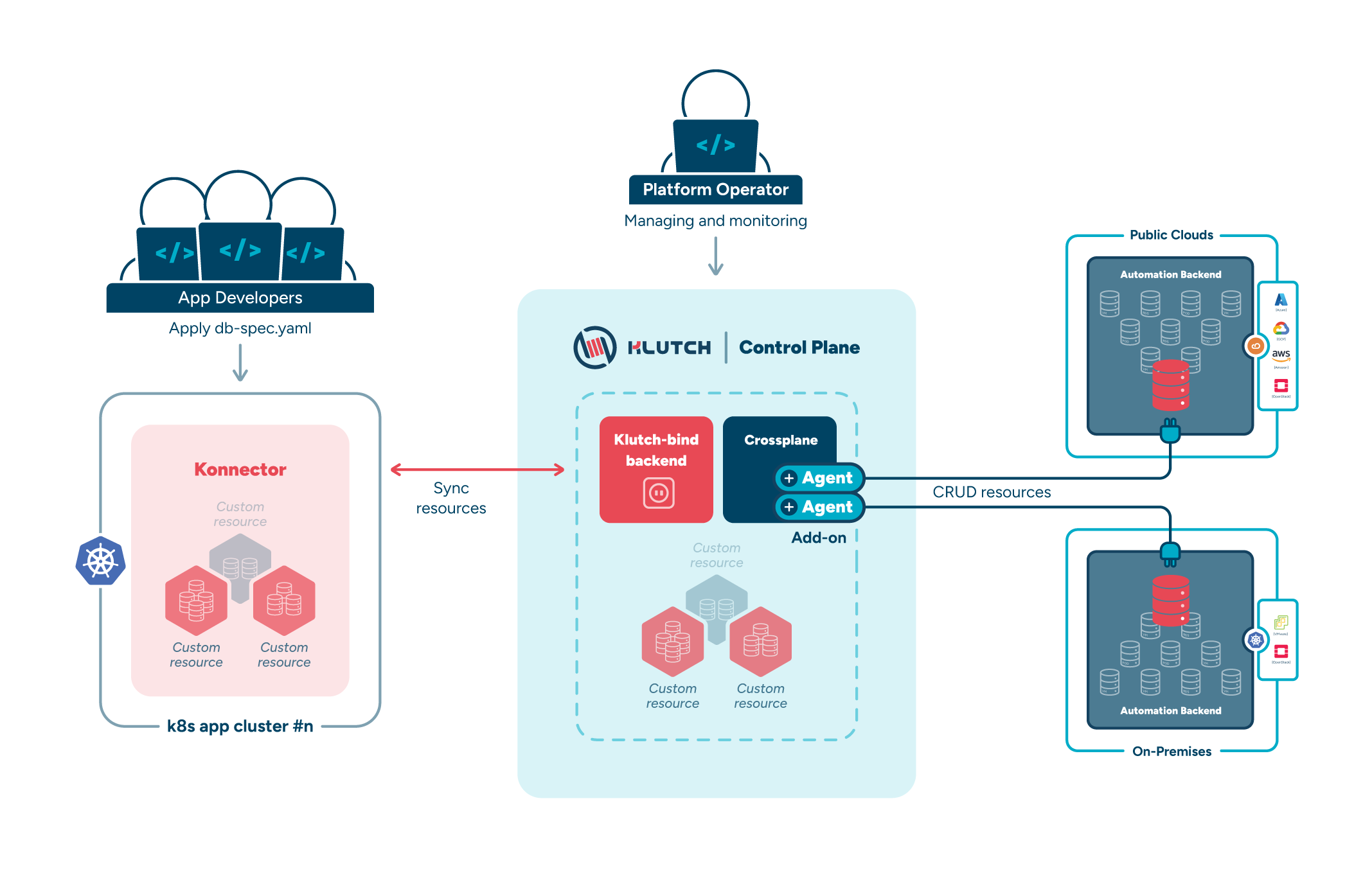Architecture
Klutch follows a multi-cluster, client-server paradigm. Developers interact with the App Cluster to request and consume data services, while platform operators use the Control Plane Cluster to manage and monitor them.

App Cluster
An App Cluster runs applications and consumes Klutch-managed data services, while the actual data services are provisioned elsewhere. Developers define their data service requirements by creating Proxy Claims, a Kubernetes Custom Resource that serves as a resource request. Klutch’s API leverages powerful abstractions to streamline data service management, covering from resource provisioning to backup and restore processes. When a Proxy Claim is applied, the request is forwarded to the Control Plane, which provisions the actual resource in an automation backend (such as AWS) and synchronizes the latest status back to the App Cluster.
Control Plane Cluster
The Control Plane Cluster is a Kubernetes cluster that serves as the central management hub for Klutch. Platform operators use it to monitor and manage data services. It facilitates the provisioning of data services across various automation backends, maintains a catalog of resources, and ensures bidirectional synchronization of resource specifications, status, and metadata with App Clusters.
In the following section, we will take a closer look at the Klutch components and how they facilitate data service management within Klutch.